Working out production bottleneck for Model 3: Tesla’s battery partner said that production problems are being worked out at the Gigafactory in Nevada, which will get the Tesla Model 3 up to 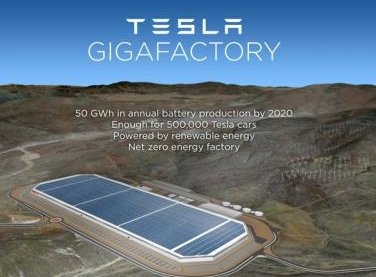 speed in the near future. Panasonic CEO Kazuhiro Tsuga said yesterday that delays to the automation of the battery pack production line meant some of it had to be completed manually. It will soon be automated, meaning the number of vehicles to be produced will rise sharply, he said. Tsugu declined to comment on how his company sees the production schedule will be carried out compared to the original projection. Automotive demand from Tesla and other auto industry customers helped the Japanese electronics company’s operating profit rise 6% during the July-September period. Panasonic supplies battery cells for Gigafactory production of Tesla’s battery packs. Earlier this month, Tesla had said that manufacturing bottlenecks had caused the slowdown for the Model 3 – down to 260 produced versus the original goal of 1,500 during the past quarter.
speed in the near future. Panasonic CEO Kazuhiro Tsuga said yesterday that delays to the automation of the battery pack production line meant some of it had to be completed manually. It will soon be automated, meaning the number of vehicles to be produced will rise sharply, he said. Tsugu declined to comment on how his company sees the production schedule will be carried out compared to the original projection. Automotive demand from Tesla and other auto industry customers helped the Japanese electronics company’s operating profit rise 6% during the July-September period. Panasonic supplies battery cells for Gigafactory production of Tesla’s battery packs. Earlier this month, Tesla had said that manufacturing bottlenecks had caused the slowdown for the Model 3 – down to 260 produced versus the original goal of 1,500 during the past quarter.
Mazda will offer rotary engine plug-in hybrid: Mazda will be bringing out a plug-in hybrid powered by battery and a rotary engine in 2019. During the Tokyo Motor Show, the company confirmed that it will be launching an all-electric and extended range electric vehicle that year. Australian online publication Motoring reported that Mazda will be announcing a series of plug-in hybrids based on existing models around 2020. After that, then a battery electric vehicle will come out. It will be co-developed with Toyota and Denso in 2021 as part of its recently launched EV joint venture.
Plug-in sales doing well in Europe: September was the second best month ever for plug-in electrified vehicle sales in Europe. At about 33,700 all-electric and plug-in hybrid vehicles sold, growth 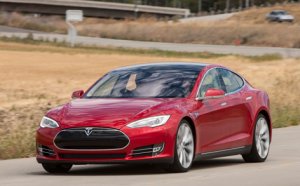 was up 32% year-over-year by the end of September. December 2015 had been its top selling month, with just over 33,800 units sold. Sales are expected to be strong in the fourth quarter, with historic data showing sales always improving over the last three months of the year in the region. Plug-in vehicles increased to 2.2% of overall new vehicle sales in Europe during September. Tesla saw its best month ever in Europe with the Model S coming in at #1 with an estimated 2,527 units sold. The next four on the list for top five selling PEVs in Europe during September were the Renault Zoe at 2,306 units sold, the Tesla Model X at 2,137, the Mitsubishi Outlander PHEV at 2,080, and the Volkswagen e-Golf at 2,041 units sold.
was up 32% year-over-year by the end of September. December 2015 had been its top selling month, with just over 33,800 units sold. Sales are expected to be strong in the fourth quarter, with historic data showing sales always improving over the last three months of the year in the region. Plug-in vehicles increased to 2.2% of overall new vehicle sales in Europe during September. Tesla saw its best month ever in Europe with the Model S coming in at #1 with an estimated 2,527 units sold. The next four on the list for top five selling PEVs in Europe during September were the Renault Zoe at 2,306 units sold, the Tesla Model X at 2,137, the Mitsubishi Outlander PHEV at 2,080, and the Volkswagen e-Golf at 2,041 units sold.

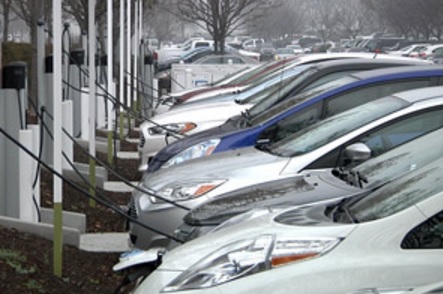 chargers in operation; 2,183 of them are fast chargers, including Tesla’s Superchargers. Available charging stations are in place at retail stores, shopping malls, movie theaters, and restaurants; and more are showing up at workplace parking lots and city government sites such as libraries. Recent first-time EV buyers are finding what EV owners have experienced in recent years. They charge their EVs at home overnight, and top off for shorter periods while at home our out running errands. Most of the U.S. charging infrastructure is located on the coasts, and fast charging stations differ based on the electric car being driven. EVgo is one of the infrastructure suppliers working at bringing more fast chargers to public charging sites. Most of them have 50-to-60 kW charging capacity for now, and up to 150 kW; with testing being done on chargers that can go up to 350 kW. That ultra-fast charger will be able to give long-range EV about 250 miles of range in about 15 minutes of charging. Most of the changes currently being made at charging stations come from upgrades at these stations, but moving up to high-capacity fast chargers will take more space, construction, and investments in the future. “For the new stations that we’re designing where possible, we’re reserving the power capacity required to serve those higher levels and laying out the stations so that all it will take is a booster in the back of the stations so that you can get up to the higher level,” said Terry O’Day, vice president of product strategy and market development at EVgo.
chargers in operation; 2,183 of them are fast chargers, including Tesla’s Superchargers. Available charging stations are in place at retail stores, shopping malls, movie theaters, and restaurants; and more are showing up at workplace parking lots and city government sites such as libraries. Recent first-time EV buyers are finding what EV owners have experienced in recent years. They charge their EVs at home overnight, and top off for shorter periods while at home our out running errands. Most of the U.S. charging infrastructure is located on the coasts, and fast charging stations differ based on the electric car being driven. EVgo is one of the infrastructure suppliers working at bringing more fast chargers to public charging sites. Most of them have 50-to-60 kW charging capacity for now, and up to 150 kW; with testing being done on chargers that can go up to 350 kW. That ultra-fast charger will be able to give long-range EV about 250 miles of range in about 15 minutes of charging. Most of the changes currently being made at charging stations come from upgrades at these stations, but moving up to high-capacity fast chargers will take more space, construction, and investments in the future. “For the new stations that we’re designing where possible, we’re reserving the power capacity required to serve those higher levels and laying out the stations so that all it will take is a booster in the back of the stations so that you can get up to the higher level,” said Terry O’Day, vice president of product strategy and market development at EVgo.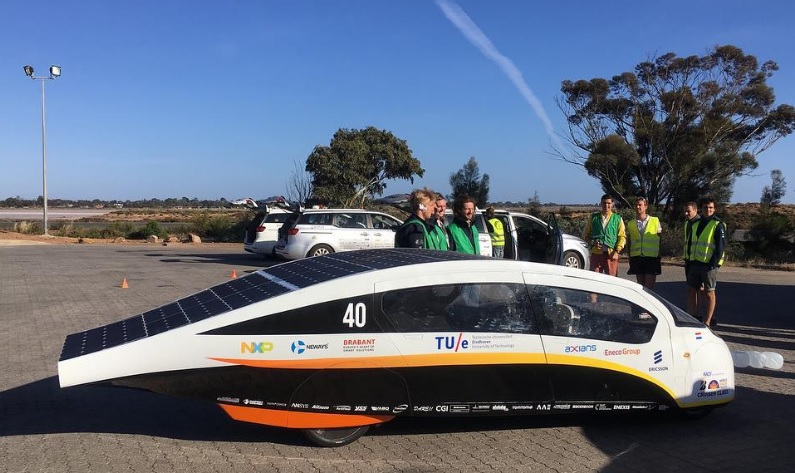 the lead. The race covered 3,022 kilometers (1,880-mile) race from Darwin to Adelaide. Stella was able to gain double the efficiency points of the second-place team. The solar-powered electric car uses a unique Solar Navigator platform from Ericsson’s Connected Urban Transport. Stella was started and created years ago by Solar Team Eindhoven from the Eindhoven (Netherlands) University of Technology, and has been widely recognized and is gaining support. In 2015, Stella won the TechCrunch award for biggest technology achievements during the 8th annual “Crunchies Awards” against an impressive list of contenders.
the lead. The race covered 3,022 kilometers (1,880-mile) race from Darwin to Adelaide. Stella was able to gain double the efficiency points of the second-place team. The solar-powered electric car uses a unique Solar Navigator platform from Ericsson’s Connected Urban Transport. Stella was started and created years ago by Solar Team Eindhoven from the Eindhoven (Netherlands) University of Technology, and has been widely recognized and is gaining support. In 2015, Stella won the TechCrunch award for biggest technology achievements during the 8th annual “Crunchies Awards” against an impressive list of contenders. indicating whether an agreement has been met. Those talks were reported to have been underway earlier this year. Tesla would still have to pay the 25% import fee that it’s had all along in China, but the company would have costs reduced not having to ship the cars into that market. It would also allow Tesla to stay true to its identity of being an independent operator by avoiding the traditional joint venture with a Chinese automaker that Tesla’s competitors have been doing for years. China is becoming more flexible to grow its local EV market and remain No. 1 globally, to clean up air pollution in its growing cities, and to free up the nation from foreign oil imports. The electric carmaker has been moving in this direction in recent years, with CEO Elon Musk thinking that it’s the most significant market in the world for company growth. The company now has a 5% stake from Chinse internet company Tencent Holdings, which should support Tesla’s strategy in that market.
indicating whether an agreement has been met. Those talks were reported to have been underway earlier this year. Tesla would still have to pay the 25% import fee that it’s had all along in China, but the company would have costs reduced not having to ship the cars into that market. It would also allow Tesla to stay true to its identity of being an independent operator by avoiding the traditional joint venture with a Chinese automaker that Tesla’s competitors have been doing for years. China is becoming more flexible to grow its local EV market and remain No. 1 globally, to clean up air pollution in its growing cities, and to free up the nation from foreign oil imports. The electric carmaker has been moving in this direction in recent years, with CEO Elon Musk thinking that it’s the most significant market in the world for company growth. The company now has a 5% stake from Chinse internet company Tencent Holdings, which should support Tesla’s strategy in that market.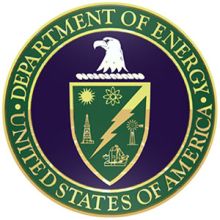 to enable growth in fast charging. It includes electrification projects that will support the development and verification of electric drive systems and infrastructure for what it defines as “extreme fast charging” (400-kW). It’s being done through the DOE’s Vehicle Technologies Office (VTO), which funds early-stage, high-risk research to support improved vehicle efficiency, lowers costs, and increases use of secure, domestic energy sources. It’s part of a VTO-funded report that will be released today, where researchers at Idaho National Laboratory, Argonne National Laboratory, and the National Renewable Energy Laboratory identified technical gaps to bring an extreme fast charging network to the U.S. The
to enable growth in fast charging. It includes electrification projects that will support the development and verification of electric drive systems and infrastructure for what it defines as “extreme fast charging” (400-kW). It’s being done through the DOE’s Vehicle Technologies Office (VTO), which funds early-stage, high-risk research to support improved vehicle efficiency, lowers costs, and increases use of secure, domestic energy sources. It’s part of a VTO-funded report that will be released today, where researchers at Idaho National Laboratory, Argonne National Laboratory, and the National Renewable Energy Laboratory identified technical gaps to bring an extreme fast charging network to the U.S. The 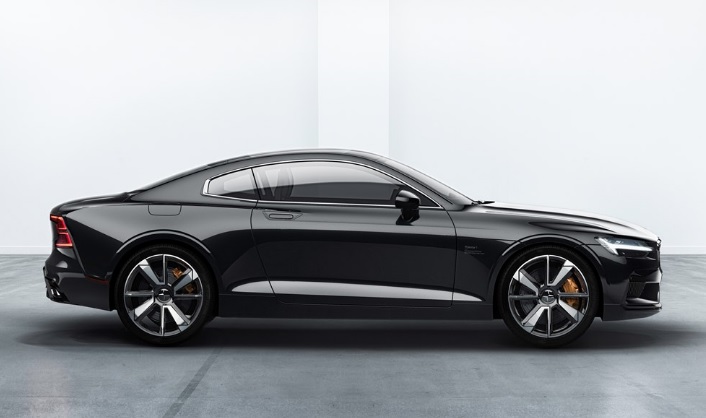 in hybrid is scheduled to roll off the production line in mid-2019. It’s a two-door, 2+2 seat coupe with an ‘Electric Performance Hybrid’ drivetrain capable of going about 93 miles on battery power. That could be less in the U.S., with Polestar not specifying whether range is based on European or U.S. standards. If it is 93 miles, it would be the longest range plug-in hybrid electric vehicle on the market. It will have a lot of power, with an output of 600 horsepower and 1000 Nm of torque, appealing to the high-performance car buyer. It will be built on Volvo’s Scalable Platform Architecture (SPA) but approximately 50% is new and created by Polestar’s engineers. A carbon fiber body reduces bodyweight. The company confirmed plans are in place for three Polestar models to be built at a production facility in China. Polestar 2 will be a battery electric vehicle, mid-sized to compete with the Tesla Model 3. It’s slated to start production in late 2019 and will have higher production volumes than the Polestar 1.
in hybrid is scheduled to roll off the production line in mid-2019. It’s a two-door, 2+2 seat coupe with an ‘Electric Performance Hybrid’ drivetrain capable of going about 93 miles on battery power. That could be less in the U.S., with Polestar not specifying whether range is based on European or U.S. standards. If it is 93 miles, it would be the longest range plug-in hybrid electric vehicle on the market. It will have a lot of power, with an output of 600 horsepower and 1000 Nm of torque, appealing to the high-performance car buyer. It will be built on Volvo’s Scalable Platform Architecture (SPA) but approximately 50% is new and created by Polestar’s engineers. A carbon fiber body reduces bodyweight. The company confirmed plans are in place for three Polestar models to be built at a production facility in China. Polestar 2 will be a battery electric vehicle, mid-sized to compete with the Tesla Model 3. It’s slated to start production in late 2019 and will have higher production volumes than the Polestar 1.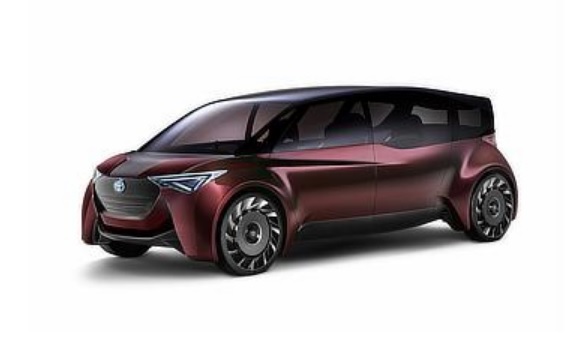 claims it can be refueled at a hydrogen station within three minutes, and will have 1,000 kilometers (620 miles) of driving range. That would be double the U.S. rating of 312 miles of range for the Toyota Mirai; however, Toyota said that the 1,000 km range rating is based on Japan’s JC08 test cycle, which would likely be farther than the U.S. rating. The concept car will also come with artificial intelligence and automated driving features, Toyota said. The “premium saloon” will have room for six passengers. The seat layout can be flexibly adjusted to make the vehicle as comfortable and user-friendly as possible.
claims it can be refueled at a hydrogen station within three minutes, and will have 1,000 kilometers (620 miles) of driving range. That would be double the U.S. rating of 312 miles of range for the Toyota Mirai; however, Toyota said that the 1,000 km range rating is based on Japan’s JC08 test cycle, which would likely be farther than the U.S. rating. The concept car will also come with artificial intelligence and automated driving features, Toyota said. The “premium saloon” will have room for six passengers. The seat layout can be flexibly adjusted to make the vehicle as comfortable and user-friendly as possible.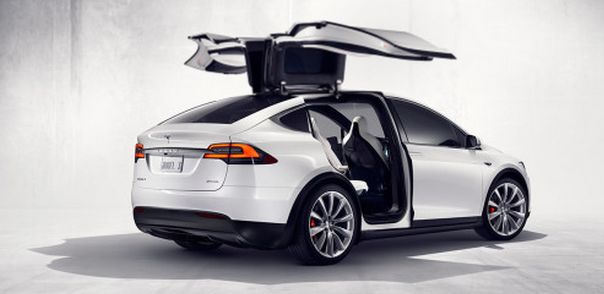 Oct. 28, 2016, and Sept. 1, 2017 with a second row seat that folds down flat, Tesla will be correcting an error that could mean the second row seats would move forward in a crash. The problem stems from incorrectly adjusted seat cables and was discovered through internal testing. It only affects about 3% of those vehicles. The electric automaker is taking on the voluntary recall through a 10-minute procedure done by mobile service operators. The company hasn’t received reports of any issues or accidents related to the problem; customers were to be alerted starting yesterday.
Oct. 28, 2016, and Sept. 1, 2017 with a second row seat that folds down flat, Tesla will be correcting an error that could mean the second row seats would move forward in a crash. The problem stems from incorrectly adjusted seat cables and was discovered through internal testing. It only affects about 3% of those vehicles. The electric automaker is taking on the voluntary recall through a 10-minute procedure done by mobile service operators. The company hasn’t received reports of any issues or accidents related to the problem; customers were to be alerted starting yesterday.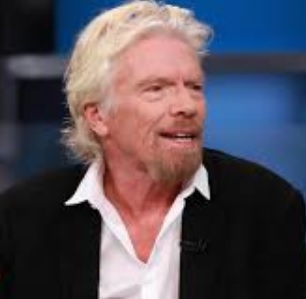 company announced Thursday it will be renamed Virgin Hyperloop One, and it followed a significant but undisclosed investment by the Virgin Group founder. Based in downtown Los Angeles, Hyperloop One comes from a concept released a few years ago by Tesla and SpaceX CEO Elon Musk. The transport system will carry passengers and cargo in pods through tubes at speeds of more than 250 miles per hour; and that could eventually go as high as 750 miles per hour. The company has been testing its pods in Nevada. Branson’s Virgin Galactic has been setting up office space in Southern California and will be directly competing with SpaceX in the space transport business.
company announced Thursday it will be renamed Virgin Hyperloop One, and it followed a significant but undisclosed investment by the Virgin Group founder. Based in downtown Los Angeles, Hyperloop One comes from a concept released a few years ago by Tesla and SpaceX CEO Elon Musk. The transport system will carry passengers and cargo in pods through tubes at speeds of more than 250 miles per hour; and that could eventually go as high as 750 miles per hour. The company has been testing its pods in Nevada. Branson’s Virgin Galactic has been setting up office space in Southern California and will be directly competing with SpaceX in the space transport business.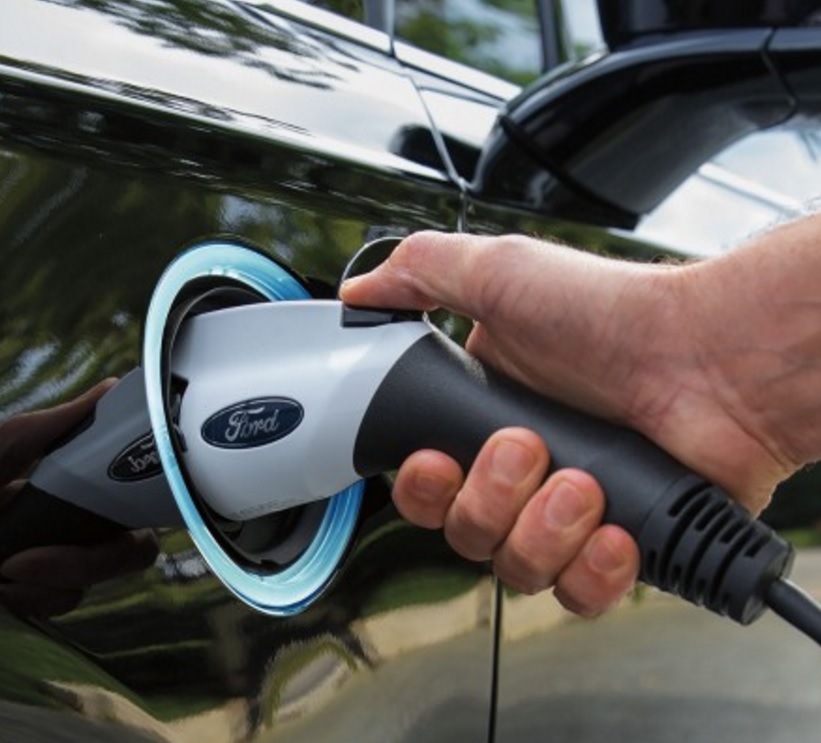 Tesla, China’s new energy vehicle market, launching the Chevy Bolt, the emergence of other long-range all-electric vehicles, and a long list of EVs in manufacturer product pipelines, the future is here now.
Tesla, China’s new energy vehicle market, launching the Chevy Bolt, the emergence of other long-range all-electric vehicles, and a long list of EVs in manufacturer product pipelines, the future is here now.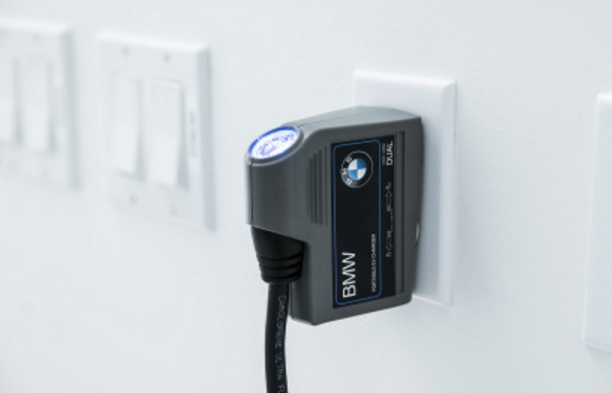 convenient 20 ft. charging cord. That brings 120-volt and 240-volt charging to BMW and Mini electric cars. The TurboCord charger can be purchased with the EV at all North American BMW and Mini dealerships and online. It also integrates state-of-the-art safety features such as unit and plug temperature monitoring, automatic shut-off and a rugged, being waterproof, and submersible enclosure (NEMA 6p) that enables users to safely and reliably charge anywhere indoor and outdoor.
convenient 20 ft. charging cord. That brings 120-volt and 240-volt charging to BMW and Mini electric cars. The TurboCord charger can be purchased with the EV at all North American BMW and Mini dealerships and online. It also integrates state-of-the-art safety features such as unit and plug temperature monitoring, automatic shut-off and a rugged, being waterproof, and submersible enclosure (NEMA 6p) that enables users to safely and reliably charge anywhere indoor and outdoor.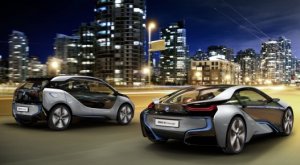 i-Series was up 73.4% in May at 7,336 units sold. Year-to-date deliveries of electrified models through the end of May reached 33,221, up 80.6%. The BMW 530e iPerformance has been available since March. Starting this summer, the 530e will be manufactured at Magna Steyr’s plant in Graz, Austria. That’s where Jaguar’s I-Pace electric SUV will be built starting early next year. The company also announced that the MINI Cooper SE Countryman ALL4 plug-in hybrid will expand the product line-up of electrified vehicles beginning in late June.
i-Series was up 73.4% in May at 7,336 units sold. Year-to-date deliveries of electrified models through the end of May reached 33,221, up 80.6%. The BMW 530e iPerformance has been available since March. Starting this summer, the 530e will be manufactured at Magna Steyr’s plant in Graz, Austria. That’s where Jaguar’s I-Pace electric SUV will be built starting early next year. The company also announced that the MINI Cooper SE Countryman ALL4 plug-in hybrid will expand the product line-up of electrified vehicles beginning in late June.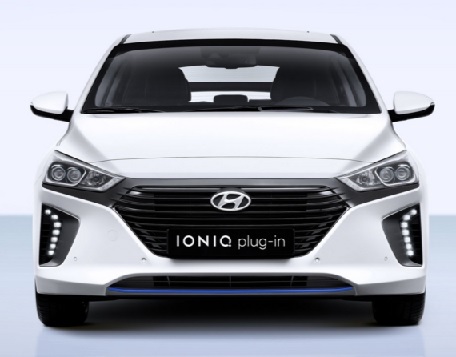 important examples of sustainable designs and provide awareness on what companies are designing and producing to make the most positive impact on the environment. Ioniq is the first vehicle in the world to offer three distinct electrified powertrains on a single, dedicated vehicle platform – the Ioniq Hybrid, Plug-in Hybrid, and Electric models. “Hyundai is committed to progressing the future of eco-friendly driving and the Ioniq is just the beginning,” said Chris Chapman, chief designer, Hyundai Design Center. “The future-focused character of the Ioniq along with its innovative use of recycled and ecologically-sensitive materials has made Ioniq the most fuel-efficient vehicle and a leader in the environmentally-friendly vehicle space.”
important examples of sustainable designs and provide awareness on what companies are designing and producing to make the most positive impact on the environment. Ioniq is the first vehicle in the world to offer three distinct electrified powertrains on a single, dedicated vehicle platform – the Ioniq Hybrid, Plug-in Hybrid, and Electric models. “Hyundai is committed to progressing the future of eco-friendly driving and the Ioniq is just the beginning,” said Chris Chapman, chief designer, Hyundai Design Center. “The future-focused character of the Ioniq along with its innovative use of recycled and ecologically-sensitive materials has made Ioniq the most fuel-efficient vehicle and a leader in the environmentally-friendly vehicle space.”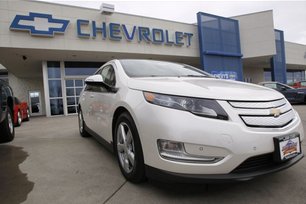 the 1.1% increase in April. The dip in manufacturing ties into increasing production cuts in the auto industry. Analysts warn that more job cuts are in the works if car sales don’t continue declining. General Motors has announced it will extend its usual two-week shutdown this summer to five weeks at some plants in the Midwest. During May auto sales, the auto industry saw a streak of declining sales for five straight months.
the 1.1% increase in April. The dip in manufacturing ties into increasing production cuts in the auto industry. Analysts warn that more job cuts are in the works if car sales don’t continue declining. General Motors has announced it will extend its usual two-week shutdown this summer to five weeks at some plants in the Midwest. During May auto sales, the auto industry saw a streak of declining sales for five straight months. 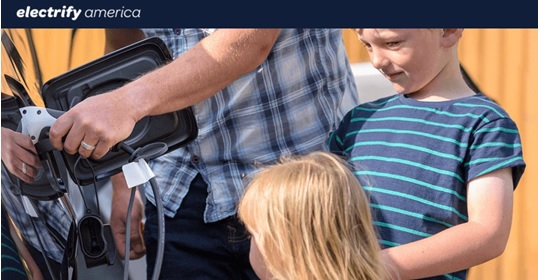 budget package that Brown had already agreed to sign. Critics of VW’s recent plan said that the first $200 million, of the $800 million to be spent in California from the settlement, could give the German automaker a competitive advantage over other automakers and charging station makers; and it would ignore low-income communities in a state that has become committed to improving air quality in disadvantaged communities that are hardest hit by polluting vehicles such as heavy-duty trucks coming from ports.
budget package that Brown had already agreed to sign. Critics of VW’s recent plan said that the first $200 million, of the $800 million to be spent in California from the settlement, could give the German automaker a competitive advantage over other automakers and charging station makers; and it would ignore low-income communities in a state that has become committed to improving air quality in disadvantaged communities that are hardest hit by polluting vehicles such as heavy-duty trucks coming from ports.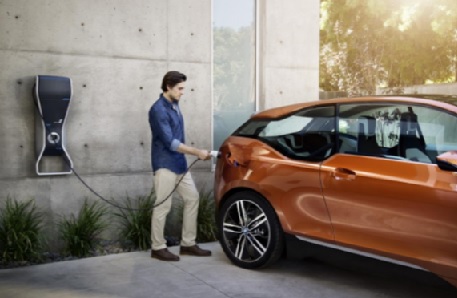 electric vehicles to become more competitive with conventional gasoline powered vehicles. A new report written by Brandon Schoettle and Michael Sivak of University of Michigan, finds a few market forces driving change. With prices of the vehicles coming down and the cost of the electricity used in charging remaining low and stable, coupled with rising interest among car shoppers and an increasing number of charging locations, plug-in electrified vehicles are becoming more competitive for replacing convention vehicles for most U.S. drivers in the relatively near future.
electric vehicles to become more competitive with conventional gasoline powered vehicles. A new report written by Brandon Schoettle and Michael Sivak of University of Michigan, finds a few market forces driving change. With prices of the vehicles coming down and the cost of the electricity used in charging remaining low and stable, coupled with rising interest among car shoppers and an increasing number of charging locations, plug-in electrified vehicles are becoming more competitive for replacing convention vehicles for most U.S. drivers in the relatively near future.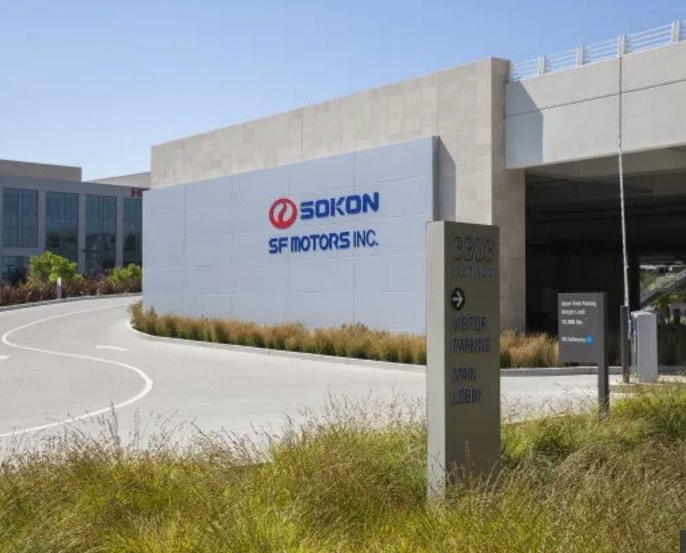 with its headquarters office in Santa Clara, Calif., and a development facility in Ann Arbor, Mich. Tesla co-founder Martin Eberhard will be part of launching the new SF Motors brand, which will be manufacturing and selling its own electric passenger vehicles. The parent company, Chongqing Sokon Industry Group Co., offers Sokon vehicles with internal combustion engines and fleet applications – small utility trucks, vans, and buses. More will be revealed in the next few months on SF Motors and its vehicle lineup.
with its headquarters office in Santa Clara, Calif., and a development facility in Ann Arbor, Mich. Tesla co-founder Martin Eberhard will be part of launching the new SF Motors brand, which will be manufacturing and selling its own electric passenger vehicles. The parent company, Chongqing Sokon Industry Group Co., offers Sokon vehicles with internal combustion engines and fleet applications – small utility trucks, vans, and buses. More will be revealed in the next few months on SF Motors and its vehicle lineup.